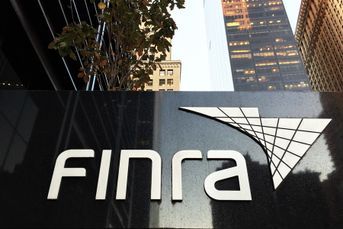Fees on savings apps can add up
Services like Acorns and Stash let people invest small amounts of money, but critics question their fee structures.
While the early digital advice startups showed how technology can make financial advice more accessible for young, mass-affluent consumers, a new generation of mobile app-based robo-advisers are looking to introduce investing and saving to people who might otherwise never consider it.
Thanks to intuitive user design, clever social media marketing, low minimums and unique fee structures, savings apps like Acorns and Stash have proven successful with the millennial population that traditional financial services have had a hard time attracting. The apps’ emphasis on micro-investing has attracted people looking to dip their toes into investing, but not ready for a full robo-adviser.
(More: Acorns co-founder believes his new technology can get clients more engaged with investments)
According to a report from Corporate Insight, Acorns has more than 3 million accounts holders, while Stash is closing in on 2 million.
The incumbents have taken notice. When BlackRock announced an investment in Acorns, BlackRock’s chief operating officer called the company a pioneer.
But some are starting to criticize the apps’ fee structures. Acorns charges $1 per month for accounts with less than $1 million for its standard brokerage service, while Stash charges $1 per month for accounts with less than $5,000.
For the investors these apps are targeting, who only have a few hundred dollars invested, that $1 subscription translates into a 6% fee, according to Cambria Investment Management chief investment officer Meb Faber.
“I think it’s predatory honestly,” Mr. Faber tweeted. “At a 5% rate of return, your account will LOSE money in these savings apps … stick with the robos folks!”
(More: Robos with the best and worst portfolios over the last two years)
Charles Rotblut, vice president at the American Association of Individual Investors, wouldn’t say the apps are doing anything nefarious, but worries that because they make it so easy for people to invest small amounts of money, users aren’t paying attention to how much of their investment is being taken by fees.
“A lot of people think this is easy, rather than taking a step back to look at it and ask, ‘What are my other alternatives?’” Mr. Rotblut said.
Stash did not respond to requests for comment.
Acorns CEO Noah Kerner said it’s inappropriate to think of Acorns’ $1 subscription as an assets-under-management fee because the app offers more than portfolio management. Acorns is about helping people save, learn and invest who otherwise wouldn’t, he said.
“Honestly our job, our collective job, is to encourage every American to engage in these behaviors,” Mr. Kerner said.
He added that the value far exceeds the $1 per month price when considering the quality of information given on Acorns’ “Grow” blog. “[We] help our customers get informed and get smarter and help them make better decisions about the financial lives and beyond.”
Mr. Kerner also disagreed with some of the assumption used to criticize Acorns’ fees. The average account size is $500, and many are taking advantage of “found money,” a program in which partner firms give money to Acorns customers for using their services, he said. For example, Airbnb will deposit $200 into an Acorns account if the user signs up to be a host.
Even at $500, the minimum amount for a Wealthfront account, $1 per month translates into a 2.4% fee, Mr. Rotblut said. With a little research, users could find a less-expensive option at a traditional robo-adviser, bank or discount brokerage.
(More: Wealthfront cutting costs on its risk parity mutual fund)
Of course, getting people to save is a great goal, but Mr. Rotblut is skeptical that Acorns is the right way to go about it. People need to be thinking about larger amounts than pocket change.
Jackie Shroyer, a senior analyst at Corporate Insight who wrote the report covering Acorns and Stash, said that while the fees are admittedly high, the apps are employing techniques to encourage users to increase how much they save.
Acorns, for example, is filled with reminders to investors to make one-time investments and set up recurring deposits, in addition to automatically investing change from purchases. It also offers $5 to users who refer a friend.
Stash has a bright orange icon that anchors all of its pages to allow users to make deposits. Ms. Shroyer said that the orange is a stark contrast to the rest of Stash’s color scheme and is great at drawing attention.
If the goal is to capture brand new investors and help them accumulate enough money that the fees aren’t as significant, both apps are doing a great job, she said.
“These are gateways to traditional, incumbent players,” Ms. Shroyer said. “They get investors comfortable. As assets grow, it makes sense for them to move to a firm that will fit their most complex needs.”
These ease and automation of these apps should serve as a wake-up call to advisers regarding what young investors want in a digital advice experience, Mr. Rotblut said. And if any of their clients have children using these apps, it provides a chance for advisers to talk to them about fees and perhaps steer them toward a lower-cost option.
For Mr. Kerner, this is a fundamentally different dynamic than what Acorns is trying to accomplish. The app isn’t about one-time deposits, but intervening on a day-to-day basis to help people save and invest money they would otherwise spend.
“Those people are not doing and were not doing it,” he said. “Cynicism does not make the world a better place.”
Learn more about reprints and licensing for this article.








